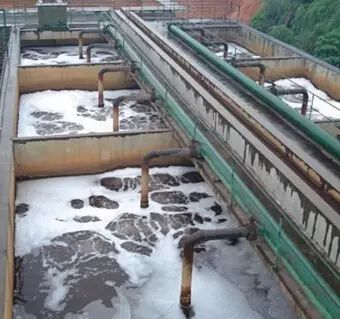How to Choose a Defoamer?

The selection of defoamers should meet the following criteria:
Insoluble or poorly soluble in foaming solution.
To break down foam, defoamers should concentrate on the foam film. In the case of foam breakers, they should concentrate instantly, while for foam suppressors, they should maintain this state frequently. Therefore, defoamers are in a supersaturated state in the foaming liquid, and only when they are insoluble or poorly soluble can they easily reach a supersaturated state. Being insoluble or poorly soluble makes it easier for them to aggregate at the gas-liquid interface, concentrate on the foam film, and function effectively at lower concentrations. For defoamers used in aqueous systems, the active ingredient molecules must be strongly hydrophobic and weakly hydrophilic, with an HLB value in the range of 1.5-3 for optimal performance.
The surface tension is lower than the foaming liquid.
Only when the intermolecular forces of the defoamer are weak and its surface tension is lower than that of the foaming solution can the defoamer particles penetrate and spread on the foam film. It is important to note that the surface tension of the foaming solution is not the same as that of the solution itself, but rather the surface tension of the foaming solution.
3. Certain degree of affinity with the foaming liquid.
Since the defoaming process is essentially a competition between the speed of foam collapse and the speed of foam generation, the defoamer must be able to quickly disperse in the foaming liquid to exert its effects over a relatively wide range within the liquid. To enable faster diffusion of the defoamer, the active components of the defoamer must have a certain degree of affinity with the foaming liquid. If the active components of the defoamer are too affine with the foaming liquid, they will dissolve; if they are too repellent, they will be difficult to disperse. Only with an appropriate balance of affinity and repulsion will the effectiveness be optimal.
4. Does not undergo chemical reaction with foaming liquid.
The defoamer reacts with the foaming liquid, which can lead to the loss of the defoamer's effectiveness and potentially produce harmful substances that affect the growth of microorganisms.
5. Low volatility and long-lasting effect.
First, it is necessary to determine the system that requires the use of defoamers, whether it is an aqueous system or an oil-based system. For example, in the fermentation industry, oil-based defoamers such as polyether-modified silicone or polyether types should be used. In the water-based paint industry, water-based defoamers and organic silicone defoamers are required. By selecting the defoamer and comparing the addition amounts and reference prices, the most suitable and economical defoamer product can be determined.
【Copyright and Disclaimer】The above information is collected and organized by PlastMatch. The copyright belongs to the original author. This article is reprinted for the purpose of providing more information, and it does not imply that PlastMatch endorses the views expressed in the article or guarantees its accuracy. If there are any errors in the source attribution or if your legitimate rights have been infringed, please contact us, and we will promptly correct or remove the content. If other media, websites, or individuals use the aforementioned content, they must clearly indicate the original source and origin of the work and assume legal responsibility on their own.
Most Popular
-

BASF Signs Another Giant: Covestro Already Set Up, Just Missing Wanhua Chemical?
-

Clariant Unveils Cost-Cutting Plan Details, Plans to Shut Down Multiple Plants
-

Clariant Plans to Shut Down Multiple Plants! Wingtech Releases Latest Statement! Oriental Yuhong Acquires Stake in Brazilian Company
-

U.S. Appeals Court Officially Rules: Trump Tariff Unlawful and Void!
-

ExxonMobil Plans to Close UK Ethylene Plant; GPI's Revenue & Profit Both Decline! Haitian's Serbia Base Enters Mass Production






